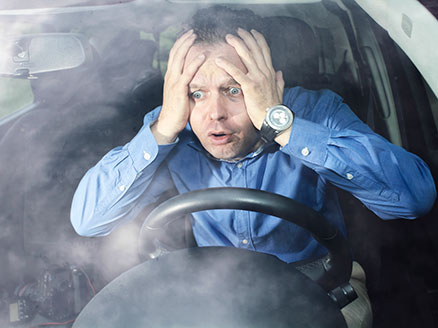
A: Have you put on your seat belt yet?
B: Not yet, but I'm doing it now.
Three Kinds of Verbs
1. Auxiliary Verbs: Be, Do, Have
These are used to change tenses or to make questions and negative sentences. Many teachers and students call auxiliary verbs “helping verbs” because they help the main verb of a sentence.

I don't like driving on icy roads.

He has already changed his tires.

Are they leaving now?
2. Modal Auxiliary Verbs: Can, Will, May, Should, etc.
These are similar to the auxiliary verbs be, do, and have because they help a main verb in a sentence. They are different because they each have a special meaning.
In the following examples, may means maybe, can't means impossible or unable, and should is asking for advice:

It may rain tonight.

We can't get to the airport in five minutes.

Should I pay a tip for that in Italy?
3. Full Verbs: Go, Play, Sing, etc.
These are all the other verbs in the English language. We can also call these verbs the main verbs of a sentence. It is very important to realize that be, do, and have also have full verb meanings. In the following sentences, be, do, and have are full verbs and not auxiliary verbs:

I did my homework last night.

Is the seatbelt broken?

He had an accident last week!

Review - Three Kinds of Verbs 1
Mark explains the different kinds of verbs
Now, let's look more at the auxiliary verbs be, do, and have:
Auxiliary Verbs: Do (do, does, did)
Do, does, or did are used in both Present Simple and Past Simple to make questions and negative sentences. In positive sentences, the Present Simple or Past Simple do not use auxiliary verbs. In negative sentences and questions, the main verb takes the base form.
Present Simple:
- Negative: He doesn't have any brothers or sisters.
- Question: Do all cars have safety features now?
- Positive (no auxiliary verb): I always put milk in my coffee.
Past Simple:
- Negative: It didn't snow here last year.
- Question: Did you buy anything yesterday?
- Positive (No auxiliary verb): I saw that movie three times last year.

Review - Three Kinds of Verbs 2
Mark explains the different kinds of verbs
Auxiliary Verbs: Be (am, is, are, was, were, been)
Continuous
be + (not) + verb-ing
Continuous sentences describe actions in progress or temporary activities. Please note the use of be even in positive sentences.
Present Continuous
- Positive: I am feeling much better today.
- Question: Are you coming to the party tonight?
- Negative: We aren't doing anything at the moment.
Past Continuous
- Positive: They were studying in class when it started to snow.
- Question: Was she sleeping at 10pm?
- Negative: The wind wasn't blowing hard then.
Passive
be + (not) + past participle
Passive sentences take the auxiliary verb be with a past participle.

Those phones are made in China.
(Present Simple Passive)

The Internet was invented in the 1960s.
(Past Simple Passive)

Has his room been cleaned recently?
(Present Perfect Simple Passive)

Review - Three Kinds of Verbs 3
Mark explains the different kinds of verbs
Auxiliary Verbs: Have (have, has, had)
Perfect
Have + (not) + past participle
Perfect sentences take the auxiliary verb have with a past participle.

I haven't seen that movie.
(Present Perfect Simple)

They have been studying really hard for the exam.
(Present Perfect Continuous)

Had he eaten breakfast before coming to school?
(Past Perfect)

Review - Three Kinds of Verbs 4
Mark explains the different kinds of verbs
Exercise
Open the exercise to begin the activity. Follow the instructions in the document.